Modifying and Overclocking GeForce3 Ti500Ti200
|
| < Day Day Up > |
|
Modifying and Overclocking GeForce3 Ti500/Ti200
After the GeForce3 chip, Nvidia released GeForce3 Ti500 and GeForce3 Ti200. These chips are similar to GeForce3. The main change is that they use different clock frequencies.
Increasing Supply Voltages
After announcing the release of the chips, Nvidia presented a new reference design for adapters based on Ti500/Ti200. However, because these chips differed from GeForce3 only in operating frequency, most manufacturers that released products based on Ti500/Ti200 didn't migrate to the new reference design. They simply installed the new chips on previously produced, standard GeForce3 video adapters.
Some manufacturers have released video adapters based on the new reference design from Nvidia. As a result, most video adapters based on Ti500/Ti200 have one of three reference-design variations: the design for GeForce3, Ti500, or Ti200.
Generally, the designs of all three variations are different. Nevertheless, the methods used to stabilize the core and video-memory supply voltages are almost identical. In all three variations, the same chips connect in the same manner. Usually, the differences lie only in the locations of the elements on the board.
As a rule, the SC1175CSW chips are the basis of designs implementing the power supply of the video adapter elements.
To stabilize the core supply voltage, the SC1175CSW chip is used in the current sharing mode. Its two independent channels serve the same workload — the graphical core. A typical connection plan implemented for a chip operating in this mode was presented in Fig. 14.2. A fragment is shown in Fig. 14.15.
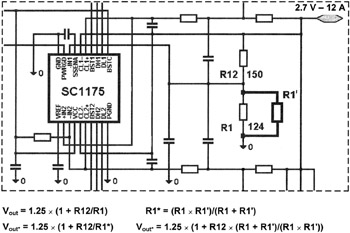
Figure 14.15: Fragment of the stabilizer connection design
The output voltage is calculated from Formula 14.1. Formulas 14.2–14.4 show how it is possible to raise the input voltage using the shunting R1' resistor.
To supply voltage to the video memory, the same SC1175CSW chip is used. In this situation, both channels operate independently, supplying memory chips with 2.5 V for input/output buffers and 3.3 V for internal circuitry (Fig. 14.16).

Figure 14.16: Fragment of a connection design with two independent channels
The output voltages of the channels are set by the R15:R14 resistor ratio for the channel supplying 3.3 V, and by R13:R11 for the channel supplying 2.5 V. Channel output voltages are calculated using the following formulas:
| (Formula 14.5) |
| (Formula 14.6) |
By shunting R11 and R14, it is possible to increase the supply voltage of the video memory.
GeForce3/Ti500/Ti200 Reference Design
For implementations of the GeForce3/Ti500/Ti200 reference design, power supply stabilizers are on the underside of the board (Fig. 14.17).
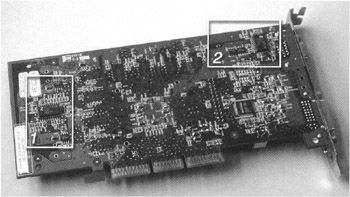
Figure 14.17: Voltage stabilizers of the video memory (1) and core (2)
Three variants of positioning stabilizers on boards, implemented according to the three versions of the reference design, are shown in Figs. 14.18–14.20.
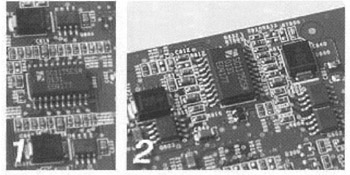
Figure 14.18: Voltage stabilizers of the video memory (1) and core (2) (GeForce3 reference design)
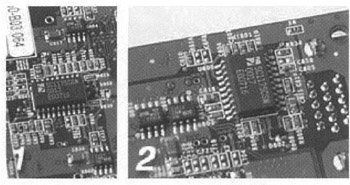
Figure 14.19: Voltage stabilizers of the video memory (1) and core (2) (Ti200 reference design)

Figure 14.20: Voltage stabilizers of the video memory (1) and core (2) (Ti500 reference design)
The layouts of the stabilizers are practically identical, and the wiring layout of each version is different only in the positions of the elements. Therefore, modification of all three versions will be almost the same.
Increasing the Video-Memory Supply Voltage
On boards implemented according to the GeForce3/Ti500/Ti200 reference design, the ratios of the resistors specifying the video-memory supply voltage usually are 110:100 ohm for the first channel (which produces an output voltage of 2.6 V), and 170:110 ohm for the second channel (which produces an output voltage of 3.4 V). After shunting each divider by additional 1-kilohm resistors, these ratios will be 110:91 ohm and 170:90 ohm. As a result, the output video-memory supply voltages will be raised to 2.8 V and 3.6 V, respectively.
For convenience, shunting resistors are soldered directly to the chip pins labeled 3, 10, 18, and 20, as shown in Fig. 14.21.
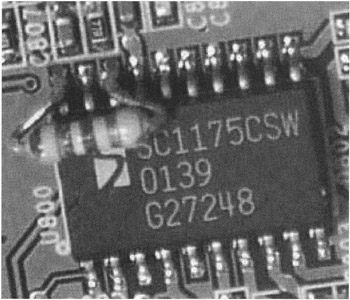
Figure 14.21: Raising the video-memory supply voltage (GeForce3/Ti200/Ti500 reference design)
Increasing the Video-Core Supply Voltage
Core supply voltage is different for Ti500 and Ti200 video adapters.
The ratio of the resistance that determines the core supply voltage for adapters based on Ti200 is 130:770 ohm. The core supply voltage at this ratio is 1.46 V.
For adapters based on Ti500, the resistance ratio is 130:580 ohm; the output voltage is 1.53 V.
Despite these differences, the core supply voltage can be raised in a manner similar to the one previously used. An additional shunting resistor is necessary. For convenience, it is soldered to the chip outputs labeled 18 and 20, as shown in Fig. 14.22.
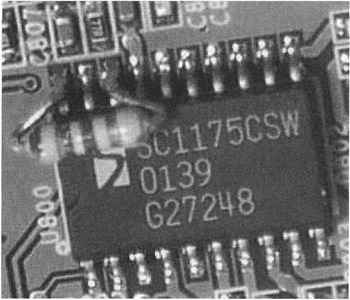
Figure 14.22: Raising the video-core supply voltage (GeForce3/Ti200/Ti500 reference design)
When using an additional 1-kohm resistor, the new resistance ratios on Ti200 and Ti500 video adapters are 130:435 ohm and 130:367 ohm. Consequently, the video-core supply voltage rises to 1.62 V for Ti200 and 1.69 V for Ti500.
Before discussing the changes in the overclocking potential of these video adapters produced by this modification, consider Asus video adapters.
Asus V8200 T2/T5 Adapter
Two stabilizers are installed on the Asus V8200 T5 video adapter (Figs. 14.23 and 14.24). The first stabilizer is practically the same as the one installed on video adapters implemented according to the SC1175CSW reference design (labeled A1). The second one is the standard single-channel AMS1505 stabilizer from Advanced Monolithic Systems (labeled A2).
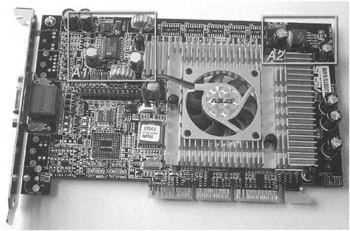
Figure 14.23: Voltage stabilizers on an Asus V8200 T5 adapter (Ti500 reference design)
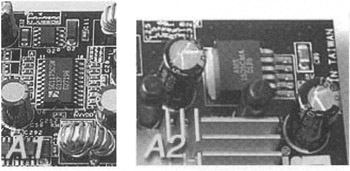
Figure 14.24: Detailed view of voltage stabilizers on an Asus V8200 T5 adapter
The first channel of the SC1175CSW chip ensures power supply for the core; the second one, 3.3 V, serves as the internal circuitry of the video memory chips. The AMS1505 chip ensures a voltage of 2.5 V for the input/output buffers of the video memory chips. This is an adjustable stabilizer; its typical connection design is shown in Fig. 14.25 and relates to the following formula:
| (Formula 14.7) |
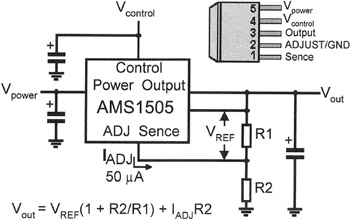
Figure 14.25: Typical connection design of the AMS1505 chip
Asus V8200 T2 has no stabilizer for 2.5 V supplied to video memory. All circuits of the memory chips are supplied with 3.3 V, even though the manufacturer's specifications say that video memory chips must be supplied with two signals: 3.3 V ± 0.3 V, and 2.5 V ± 0.2 V (Figs. 14.26 and 14.27).
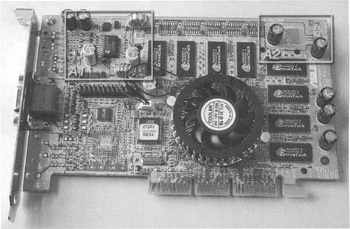
Figure 14.26: Voltage stabilizers on an Asus V8200 T2 adapter (Ti200 reference design)
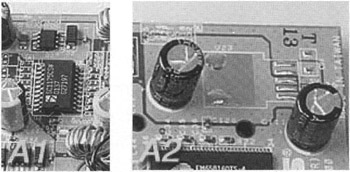
Figure 14.27: Detailed view of voltage stabilizers on an Asus V8200 T2 adapter
The method of raising the video-memory supply voltage is illustrated in Fig. 14.28.

Figure 14.28: Raising video-memory and video-core supply voltages on Asus V8200 T2/T5
Resistance ratios for setting the core supply voltage on Asus V8200 T2 and V8200 T5 are 140:780 ohm and 140:590 ohm. Consequently, core supply voltages are 1.47 V for Asus V8200 T2 and 1.55 V for Asus V8200 T5.
The resistance ratio that determines the supply voltage for internal circuitry of the video memory chips on Asus V8200 T2/T5 is 220:120 ohm, which produces a supply voltage of 3.54 V.
When using 1-kohm shunting resistors, the core supply voltage on Asus V8200 T2 and V8200 T5 video adapters becomes 1.67 V and 1.72 V. The voltage supplied to video memory changes from 3.3 V to 3.81 V.
Because of the previously described lack of a stabilizer for the 2.5 V signal to the input/output buffers of the video memory chips, these Asus V8200 T2 chips are supplied with the same voltage: 3.81 V (Fig. 14.29).
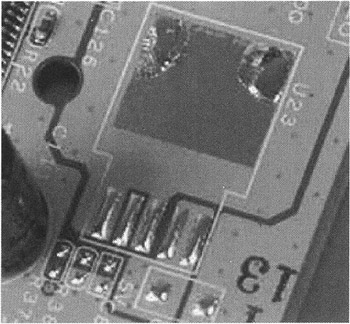
Figure 14.29: Voltage stabilizer for 2.5 V is missing on Asus V8200 T2
Perhaps 3.81 V is too much for the circuits intended for 2.5 V. Although the modified Asus V8200 T2 adapter completed all stability tests, this doesn't mean that there will be no problems during lengthy operation of the video memory chips, especially in an extremely overclocked mode.
On Asus V8200 T5 (Fig. 14.30), this problem doesn't exist. After using the 1-kilohm shunting resistor, the output voltage at the AMS1505 stabilizer was 2.76 V.
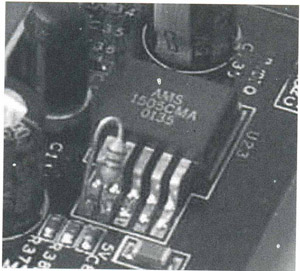
Figure 14.30: Raising the memory supply voltage on Asus V8200 T5
Overclocking and Testing
The following hardware configuration was used to test the modified video adapters:
-
Processor — AMD Athlon XP 1500+
-
Motherboard — Gigabyte Technology GA-7VTX (VIA KT266A)
-
RAM — 256 MB, DDR SDRAM, PC2100, Apacer CL2
-
Hard disk — IBM DTLA 307020, 20 GB
The following software was used:
-
Driver — Nvidia Detonator v. 22.80 for Windows XP
-
Operating system — Windows XP
-
Test — 3DMark2001
The performance of the video adapters was evaluated using 3DMark2001 (Figs. 14.31 and 14.32).

Figure 14.31: Test results obtained using 3DMark2001 (Car Chase)
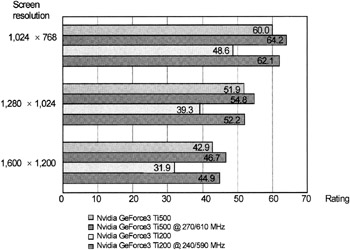
Figure 14.32: Test results obtained using 3DMark2001 (Dragothic)
As is obvious from the data in Figs. 14.31 and 14.32, the results shown by Ti500 are not improved considerably by extreme overclocking. This relates to the standard operating frequencies of the core and video memory on Ti500, which already are close to the limit. Therefore, even with extreme overclocking, the frequency increases and the performance gain are insignificant. This does not apply to low resolutions, for which the result is determined by the CPU frequency and overall system performance, rather than by video adapter frequency.
Ti200 is ahead of Ti500 in extreme overclocking modes at standard frequencies. However, this result is achieved only because of the high frequency of video memory. In the nominal operating mode, Ti200 shows minor performance growth; at high resolutions, it is about 50%.
Conclusion
Thus, it is possible to draw an unambiguous conclusion: Modification and extreme overclocking of video adapters based on GeForce3 Ti500 are pointless. The performance growth doesn't justify the difficulties that arise from adapter modification. It is possible to raise the supply voltage on the core and video memory even higher, and to install on the core a powerful cooler, such as Dragon Orb 3 or Volcano 6. It is even possible to equip the video adapter with Peltier elements, but these would be too much, even for extreme overclocking. All these expenses wouldn't be justified by the performance growth.
The situation is somewhat different with video adapters based on GeForce3 Ti200. The frequency limits for Ti200 in overclocked modes are between 220 MHz and 230 MHz. Extreme overclocking achieves even higher values, between 240 MHz and 250 MHz. This is lower than the frequency limit of Ti500. However, extreme overclocking of Ti200 ensures a significant increase of the core frequency from the initial level (175 MHz), providing greater performance gain than Ti500.
When overclocking the video memory of Ti200-based adapters, everything depends on the quality of the memory chips installed by the adapter manufacturer. Consequently, the smaller the access time of the memory chips (compared to the standard variant of 5 nanoseconds), the greater the memory frequency growth provided by overclocking. Therefore, when purchasing a video adapter, always pay attention to the type of video memory installed on it by the manufacturer. This is important even if you do not plan to overclock the adapter.
|
| < Day Day Up > |
|
EAN: 2147483647
Pages: 111